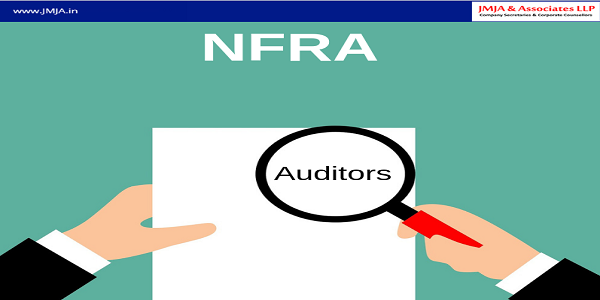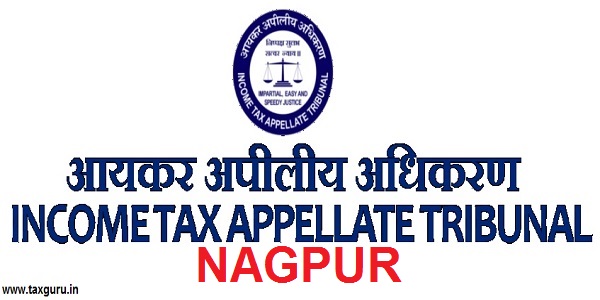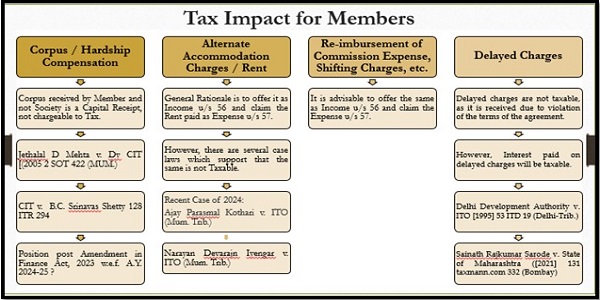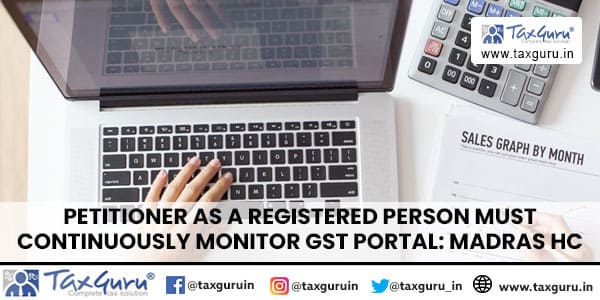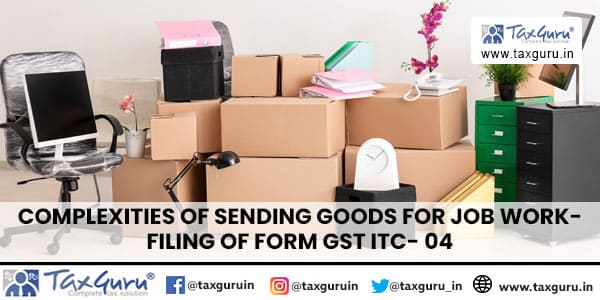Case Law Details
COMPETITION APPELLATE TRIBUNAL
Singhania & Partners LLP
Versus
Microsoft Corpn. India (P.) Ltd.
APPEAL NO. 17 OF 2011
OCTOBER 9, 2012
ORDER
Justice V.S Sirpurkar, Chairman
Being aggrieved by the order passed by the Competition Commission of India (‘the CCI’) under section 26(2) of the Competition Act, 2002 (‘the Act’) and express an opinion that the informant had failed to make out a prima facie case for making a reference to the Director General for conducting investigation into the matter under section 26(1) of the Act (for majority) and thereby closing the proceedings. The original informant has come up before us by way of an appeal under section 53B of the Act. The dissenting Member Shri R Prasad has, however, chosen to hold that there existed a prima facie violation of Act relating to the abuse of dominance and adoption of anti-competitive agreement and issued a direction to the Director General to investigate the matter under section 26(1) of the Act. Since the majority of the opinion is against the informant, the informant has come up before us in Appeal.
2. The informant is a law firm. It alleged before the CCI that it intended to purchase Microsoft products, namely, Microsoft Operating System and Microsoft Office 2007 for the computers in its office. Respondent No. 1 was described to be world’s leading multi-national computer technology corporation which developed manufactured licences and support licences and supported a wide range of computer operating systems. Respondent No. 2 was described as a private limited company and recommended by the one of executives of respondent No. 1. It was pointed out that in pursuance of the discussions regarding the requirements for the various licensed software the respondent No. 2 vide e-mail dated 20th November, 2008 sent a proposal to the informant for one “Microsoft Vista Business” and “Microsoft Office 2007”. It was further pleaded that the informant vide letter dated 21st November, 2008 placed an order and also sent a cheque of Rs. 1,97,250 on 24th November, 2008 towards 50% of the total consideration. It was informed to the informant by one of the executives of the respondent No. 1 that only the volume licences of the ordered products can be purchased and not the Original Equipment Manufacturer (‘OEM’) Licences. Further, as per the informant, the said executive of the respondent No. 1 pressurised the respondent No. 2 to cancel the purchase order placed by the informant and directed the informant to place an order for the volume licences instead of OEM licences. The informant came to know that price for the volume licence was almost double to the price quoted for OEM licence in spite of the fact that the two products were same. It was further pleaded that respondent No. 2 vide its e-mail dated 27th November, 2008 cancelled the order of the informant and insisted to place another purchase order for the required software at the prices quoted for the volume licences. The informant then pleaded that due to urgent requirement, the informant had no other option but to place a revised order with respondent No. 2 at the quoted higher rates of the volume licences amounting to Rs. 5,71,816 excluding the taxes. The informant alleged that the software in both was identical and if the same software is licensed to the new computer, namely, OEM Licences then it was cheaper while when it was licensed to the existing computer, i.e., volume licence then the cost was more. The informant also complained that on 20th January, 2009 it placed an online order for the purchase of Microsoft Office Professional 2007 Software after enquiring on the alleged website of respondent No. 1 and on receipt of software it was found that the software was labelled as “for use only with a new PC with 2007 Microsoft Office Suite or component application software pre-installed.” According to the informant there was no mention of such condition earlier when the order was placed. It was also alleged that the different dealers of respondent No. 1 were selling the same products at different prices and a small percentage by them offered the same at the lowest price and that was clearly the example of “artificially controlling the prices”. It was urged that respondent No. 1 was having the market share of 90 per cent and was a dominant firm in the market and its over-pricing for volume licence and coercing the informant to buy volume licence and not the OEM licence and that too for double the price of OEM licence was a clear violation of section 4(2)(a)(if) of the Act. It was also urged that the respondent No. 1 had violated the provision of the section 3 of the Act by imposing the restriction on the consumer in acquiring the licences of Windows Operating System and thereby it artificially controlled the supply and pricing of its product. In short, the complaint is that the respondent was charging different price for the same product. The respondent in support of its information filed certain documents which were transcripts of conversation between the informant and the officials of respondent No. 1. The respondent No. 1 and respondent No. 2 appeared before the CCI and requested for an opportunity for inspection of the case file and sought the permission to put their case. Such permission having been granted and respondent Nos. 1 and 2 filed their written submissions. On that basis, the Commission considered all the relevant materials.
3. In their written submissions, respondent No. 1 had taken the position that the informant had failed to provide any information and had not raised any competition law issue. According to them respondents licensed its product through three main channels of distribution namely OEM licence, volume licence and retail chain. It was pleaded that software of Intellectual Properties Rights and software licence governed the use and redistribution of the intellectual property. It was pointed out that first respondent’s relations with its distributors and the retailers were independent and did not create any principle agent relationship. It sold its product of licences to the distributors and resellers on a principal-to-principal basis. According to them, it is the licence itself which determined the nature of the product which was granted to the customer. They pointed out that licensing policy was followed by its global policy which is similar to the practices utilised by most IT firms across the globe. It was explained that three distribution channels were distinct and different for licensing rights to maximise the distribution efficiency. It was pointed out that OEM distribution was the highest volume channel of Microsoft which involved sales and distribution to the branded personal computer manufactures only and because of the size of its distribution channel it was offered at the lowest prices for Windows and Office software. It was pointed out that OEM licences pattern was different in nature than those purchased through other channels and that OEM version of operating system was not liable to be sold unless it was installed on a personal computer. As against this, it was pointed out that the volume licence channel was the most significant channel for business and other organisation which were sold in larger volume and the customers could upgrade from older OEM or retail version for the most recent version of the operating system. It was also pointed out that the volume licensing customers are not provided with many of the benefits and services as compared with the OEM including the benefit of testing. In addition to this, the Microsoft had considered the cost of support for volume licence customers, coupled with higher packaging cost. It was explained by respondent No. 1 that the third distribution channel, namely, the retail distribution offered windows and office for sale through the retailers and that was the lowest volume channel though with higher cost. In short, its stand was that it was not charging different price for the same product and that volume licence was essentially different in the nature from the OEM licence, and therefore there was bound to be difference in prices and, therefore, there was no question of any anti-competitive practices being adopted by respondent No. 1. What was explained was the different nature of licences and the essential difference in between those licences.
4. On this basis ultimately the Commission went on to hold that there was different pricing policy adopted by respondent No. 1 in respect of identical type of licences and, therefore, it was held that three types of licences which were being sold by respondent No. 1 were not similar to each other. It was also held that the informant had failed to place on record any material which could suggest that three licences were identical or in any case similar on the basis of the intended use of the customer. On the basis of its majority, the Commission took the view that there was no case made out for making a reference to the Director General for investigating into the matter. The dissenting Member, however, took a different view. In that the learned Member held that the matter required investigation.
5. Shri Singhania appearing on behalf of the appellant urged that it was clear from the facts that respondent No. 1 was abusing its dominant position in pricing its product as well as putting its artificial restriction on the consumer and compelling them to purchase the costly products and refusing to sell the identical products at lower price. According to the learned counsel, the CCI had failed to advert to the evidence provided by the appellant from which it was clear that respondent No. 1 was abusing its dominant position in the market. The contention raised is that the three licences sold by Microsoft being (i) OEM Licences ; (ii) Retail Version; and (iii) fully packaged product of volume licences were identical and performance of any of the three licence installed in computer was also identical. According to the learned counsel different rights/benefits were attached to the different licence was only a facade to charge higher prices on end-user.
6. The learned counsel further pointed out that in all the three licences the same operations were being done, i.e., Microsoft Windows and Microsoft Office. When the three licences were doing the same work it was unnatural that the respondent No. 1 was charging more price for the volume licences than the OEM licences or as the case may be the full retail version/fully packaged product. The learned counsel also complained that respondent No. 1 could not have refused to sell the OEM licence or could not have even insisted on the appellant purchasing the volume licence. It was tried to be argued that in both the cases, namely, OEM Microsoft Office or volume licence are only for one computer. Therefore, the practice of price discrimination was not justified, merely because in the volume licence the same is allowed to be used for consumer’s own purpose and in OEM licence the assembler is entitled to install the same programme on more than one computer, it did not mean that two licences were different. Our attention was also invited towards the material where OEM licence was offered to be sold by the retailer in the beginning, however, he was forced to cancel the order and further to sell the higher priced volume licence. It was also pointed out that the volume licence could be only used as an upgrade to the new version of the operating system from older existing OEM or retail version, was not a full version of the operating system and therefore the appellant was in need of full version of the operating system as well as Microsoft application software. The fact that Microsoft was offering only the volume licence to the appellant clearly amounted to the deceitful conduct on their part. It was again reiterated that licensing policy was only a tool in the hands of Microsoft to pressurise the distributors and resellers to sell the same product to various consumers at different prices. It was pointed out that the plea of the respondent that the retailer had committed a mistake in offering OEM licence was a plea without bona fides. It was pointed out that licensing policy of Microsoft was only an artificial device for controlling downstream distribution chain and also a device imposing unfair prices and condition on the end consumers. It was again reiterated that Microsoft Office programme includes Microsoft Word, Microsoft Excel and Microsoft Power point, etc., and all these perform the same function whether bought in OEM version or FPP or a volume licence. Shri Singhania also urged that the OEM licence was available irrespective of the fact whether the end-customer is a system builder or an assembler and/or the OEM licence was available separately pre-installed on a computer.
7. As against this, Shri Ramji Srinivasan contended that the term ‘product’ is totally and completely misunderstood by the appellant. He pointed out that there was no dispute at all that the three licences performed the same function of Microsoft Office, etc. However, he explained that three licences were separate and distinct. The learned counsel gave a simple example of a movie. He pointed out that a movie shown in the cinema hall or a movie shown through a DVD or a movie shown on the television channel was the identical same movie. However, the licence for showing the movie in the cinema hall would be costlier than the licence for DVD which could be seen only by an individual on a separate TV set. Similarly, a licence sold to TV channel for showing the said movie would certainly cost more. He pointed out that in this example the ‘product’ was not a movie. The product was a ‘licence’. He gave same example and pointed out that though three licences have the same Microsoft Office programme yet everything depended upon the rights attached to those licences. For this purpose, the learned counsel very specifically brought put the difference in the three licences. The learned counsel also explained the role of the respondent No. 1 and explained that it did not engage in any licensing activity nor had it engaged any distributors in India. It was pointed out that respondent No. 1 only rendered marketing services for Microsoft software, pre-sales consulting and post sale services, and support to customers and from this generated the revenues. It was pointed out that Microsoft products were available in India through a wide network of distributors, resellers and retailers spread all over the country and the distributors of Microsoft products in India procured the products from Microsoft overseas entities in Singapore and US. He was at pains to point out that there was no direct relationship between respondent No. 1 and Microsoft distributors and resellers in India nor there was any direct relationship between any Microsoft entity and resellers such as Embee. It was, therefore, pointed out that since there was misnomer on the part of the appellant on this essential aspect as to the concept of ‘product’ there was total misunderstanding which was rightly understood and explained by the majority version of the CCI. The learned counsel for this purpose invited our attention to the reply filed by respondent No. 1 before the CCI and invited our attention to the following table explaining the inter se difference in the three licences.
| OEMs | Volume Licence | Retail of FPP | |
| Primary Microsoft Customer | OEMs and OEM distributors | Distributors | Distributors |
| Licensor to end- Customer | OEM | Microsoft is licensor to the end- customer | Microsoft is licensor to end- customer |
| Service provided | OEMs install and test software and are responsible for certain customer support | Customer installs software, Microsoft is responsible for certain customer support | Customer installs software, Microsoft is responsible for certain customer support |
| Volume available to End-User | Any volume but only pre-installed on PC | Licences for at least 5 PCs; licences not individually packaged | Any volume. Each copy is individually packaged |
| Windows : full or upgrade version | Full version (no prior version needs to be on the device) | Upgrade only (other than “Get Genuine” programs) | Full version (no prior version needs to be on the device) |
| Transferability for End-Customer | Windows and Office are non-transferable -attached to the device | Windows is non-transferable ; Office can be reassigned to a different device | Both Windows and Office are transferable ; can be reassigned to a different device |
8. He also relied on few reported judgments of the Supreme Court, to support his other arguments relating to the pleadings. The learned counsel also pointed out that there was necessity for in creating three different licences in order to curb the piracy of intellectual property rights. The learned counsel urged that the Microsoft had to protect its (i) intellectual property rights, (ii) reduce piracy, and (iii) eliminate the mis-licensing of its products in India. The learned counsel relied on the Supreme Court judgment in Karpagathachi v. Nagarthinathachi [1965] 3 SCR 335 to suggest that the new grounds cannot be raised at the appellate stage. He also relied on the judgment in National Textile Corpn. Ltd. v. Nareshkumar Badrikumar Jagad [2011] 12 SCC 695 at paragraph 12 to support the same point.
9. It is on these conflicting claims that we have to decide as to whether the CXI was right in refusing to investigate the claim of the appellant that the first respondent had abused its dominant position and had adopted anti-competitive agreements and had also tried to fix the prices.
10. From the findings of the CCI (in its majority judgment) it can be seen that two licences, namely, OEM and volume licence have been explained to be the different products and, therefore, it has been held that Microsoft was justified firstly in refusing to sell OEM licence to the appellant firm and secondly to insist that the appellant firm should purchase the volume licence.
11. In order to explain the OEM system, the learned counsel produced a brochure. It is clear that a licencee in the OEM. system has to be the original equipment manufacturer or as the case may be an assembler of the computer. The said licensee must be (a) a system builder to distribute the OEM licence ; (b) the licensee is provided a limited right to distributors software ; (c) the software has to be pre-installed on a customer system before the distribution and the licensee must provide end-user support to the consumer. It is further clear from the brochure that the OEM version of the Microsoft Windows or Microsoft Office licence cannot be resold to the end-users unless it is already installed on a personal computer.
12. The OEM licence are specific to the device, i.e., the personal computer on which it is installed unlike retailer or FPP version of Microsoft Windows and Microsoft Office. The licence cannot be transferred to a different personal computer.
13. OEMs pre-installed the software works into “out of the box” when the consumers sets up the personal computer. In that the end-user consumer is not required to take complicated exercise of installing the software like Microsoft Windows and Microsoft Office. Since OEMs software is pre-installed, the burden is eliminated and customers have a smoother set up experience.
14. It is a licensee holding the OEM licensor who is a licensor to the end-customers and, therefore, has to provide all the services to the end-customer including for the software, i.e., distributed with the finished system. The agreement of Microsoft with OEMs specifically requires that the OEMs licensing would provide support for pre-installed copies of Microsoft software. The customers who have any problem have to call the OEM support centre which is provided by the OEM licensee. The OEM licensee, thus, may be able to lower the cost of overall customer support by the extensive testing of the system as well as pre-installation and, thus, the Microsoft is not present in other channels of that advert.
15. However, in FPP and volume licensing channels it is Microsoft, i.e., the appellant which has to bear the costs of the support for Microsoft Windows and Microsoft Office which are substantial costs and it is, therefore, that the OEM licensing is cheaper in comparison to the licences of FPP and volume licence. Lastly the OEM licensee has to bear the burden of marketing and selling its product, namely, personal computer with pre-installed software of Microsoft. While in the volume licensing and the retailer channel it is the Microsoft, i.e., appellant which is responsible for marketing and selling its software. The learned counsel also explained that the OEM licences cannot use Microsoft Software on its own personal computer. For that purpose, he would have to purchase a volume licence. The learned counsel for the respondent argues forcibly that OEM licence is for the manufacturers of the computer and is not a commercial licence for legal firms like the appellant herein as this legal firm is not in the business of manufacturing or assembling the computers. It is only concerned with the software to be used in their office and this according to the counsel was the essential difference between OEM licence and volume licence. The learned counsel also explained the difference in volume licence distribution on the one hand and OEM on the other hand by pointing out that the volume licences was the end-user licences and not the commercial licence for installation and resale with personal computer as in the OEM channel. It is also seen from the arguments of the learned counsel and the brochure which has been circulated and compared to the OEM channel volume licensing to the end-customers received additional rights with their software licence. The end-users of the volume licence could also downgrade or upgrade the newer version of the Windows or Office which is not possible in the personal computer purchased by end-consumer from the OEM licences. The learned counsel also explains their channel of the retail distribution. However, we are not really concerned with the retailer distribution in this matter. It is again a third kind of licence independent of OEM and volume licence. These arguments could not be refuted by the appellant.
16. The above discussion shows that the ultimate product which was offered to be sold is not a software of Microsoft Office or Microsoft Word but the three distinct and separate licences. That being so, there could be no question of any allegations made against the first respondent having any basis. We are of the clear opinion that there was no unfair or discriminatory prices as the prices were different depending upon different nature of the three licences.
17. It is a matter of common knowledge that different IP rights bear different prices. In fact since the nature of licences are different keeping different prices for these licences would be in the interest of consumer.
18. It is also seen that the claim of the appellant was that even if the two licences are different and seller had put different rates, the appellant in that event should have choice as to which of the two he would wish to buy. This claim is not justified at all since all the three licences have different obligations. All the three licences have different applications. If the appellant is not an original equipment manufacturer he cannot expect that licence for running the office of a law firm. This claim made by the learned counsel for the appellant is, therefore, clearly incorrect.
19. Though the appellant argued about the abuse on the part of respondent No. 1 by charging unfair prices there is nothing to show that such unfair pricing was done by Microsoft in selling identical licence at different prices. No such evidence was also brought before the CCI or before us. Therefore, there can be no question of there being any abuse on that account. Though it was haltingly argued that the respondent was tying its OEM with new computers, the argument has to be rejected. Firstly, it was argued for the first time at the appellate stage and secondly the purchaser of personal computer has the choice to have the programme of Microsoft Office or Word getting installed in its computer if he so chooses. This cannot be, therefore, an example of tying up. There is no compulsion on the appellant to purchase Microsoft software to purchase the computers only as the OEM licensee was free to sell their product, i.e., personal computer even without the warranty. That would clearly end the argument about the tying up. Much was said about the respondent No. 1 forcing the respondent No. 2 to cancel the order of OEM which was placed by the appellant. We do not think that anything was wrong on the part of respondent No. 1 in refusing to sell the OEM to the end-user, i.e., the appellant and for that purpose asking the reseller that no such licence could be sold to the law firm which was not the original equipment manufacturing firm. If the resellers had agreed to sell an incorrect licence to the appellant the respondent was perfectly justified in saving its own interest by advising its retailers not to sell the incorrect licence to the appellant.
20. It was also tried to be suggested that by refusing to sell the OEM licences, the respondent No. 1 was causing an unfair denial of market access. There is no question of any denial of market access for the reasons stated by us earlier to the effect that respondent No. 1 was quite justified in refusing to sell the OEM to the appellant who was not the original equipment manufacturer. In short, we find no controversy of section 4(2)(a) of the Act or 3(3)(a) or 3(3)(b) or for that matter any other provisions of the Act.
21. At this juncture, we must also take into account the opinion expressed by the minority member. Though the learned counsel did not rely on the minority order for obvious reasons and though he did not take up those points for arguments, we must express that we do not agree with the learned member in minority judgment. The observation that Microsoft does not allow the OEM licensee to transfer the software (the word used by the learned member is licence) from one machine to another even if the concerned person is abandoning to use old machine and that had restricted the rights of the consumers following the provision under the Act is not correct. The very nature of the OEM licensee is only to sell the computer with loader software on a particular machine. It will not be the task of the OEM licence to load the software in existence in one machine to another machine because for that purpose he would have to have a fresh licence.
22. Further the observation regarding the difference in prices is also not correct for the reasons we have already given to the effect that three licences were different in nature and there was no evidence that the identical licence was sold for different prices. The learned counsel also did not press this argument into service. We also do not agree with the learned Member that a baffling situation is created for a customer wanting to purchase more than five personal computers and that this situation is on account of the conditions attached to the OEM licence, FPP and volume licence. In our opinion, there was no question of any baffling situation. We also do not agree with the observation “to have cheaper version one has to buy a new PC and, thus, Microsoft is able to maintain retailer prices of its office package. Therefore, the agreement between the Microsoft and OEM is beneficial to business and to eliminate competition in the relevant market”. In the first place such plea could not have been raised by the present appellant who is not a dealer in production of machine and who also is not a holder of OEM. He is also not competitor in the market. There would be no hindering the competition as these licences are not comparable to any other product. Further, observation that the Microsoft maintains full control price of various software, the retailer’s further sales in the garb of licensing policy is also not correct. The other observation in paragraph 14 is also not correct. That was not complained by the appellant also. For all these reasons, we are not in agreement with the minority view. For all these reasons we are of the opinion that this appeal has no merit and must be dismissed. However, under the circumstances we desist from giving any orders as to costs. The parties shall bear their own costs.






